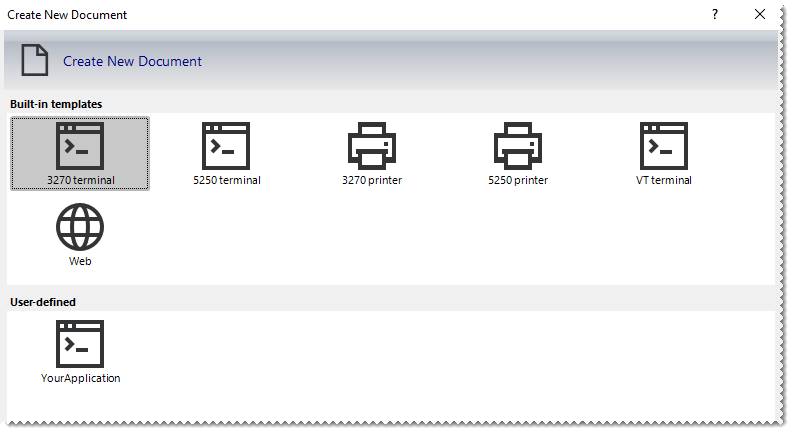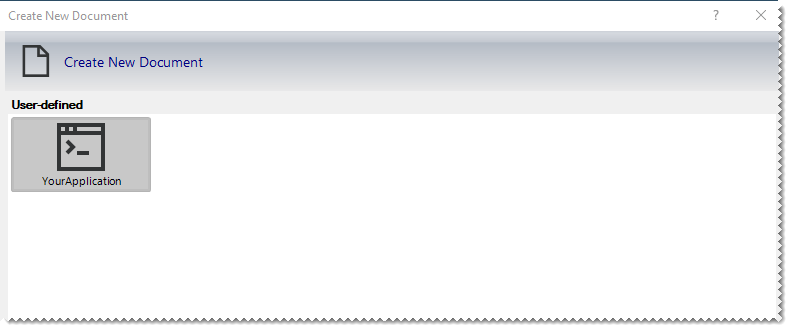Set up Session Templates
Templates provide an untitled copy of the original, giving you a quick and easy way to create pre-configured documents, while ensuring that your original file remains unchanged.
You can also use templates to control the types of sessions that users can create. For example, you can create templates that have pre-configured SSL/TLS settings. These templates appear in the Create New Document dialog box, under User-defined.
Create a Session Template
After you configure a session document, you can share and reuse your settings by saving the document as a template.
To create a session template
-
Open the session document that you've configured.
-
The steps depend on your user interface mode.
Ribbon On the File menu or the Reflection button  (if using the Office 2007 Look and Feel), choose Save As and then Save Template.
(if using the Office 2007 Look and Feel), choose Save As and then Save Template.Classic MDI From the File menu, select Save As Template. -
Name the template file with an
.rsftextension. -
To lock down settings you have configured in the template, see Control Access to Lock Down Settings and Controls.
To make changes to the template, you must replace the template file — save the file that contains your changes using the same filename and extension as the template.
note
To deploy templates, install the .rsft files to the templates folder:
[AppDataFolder]\Micro Focus\Reflection\Desktop\v18.0\templates\
where [AppDataFolder] is the full path of the Roaming folder for the current user. The default path is c:\users\username\AppData\Roaming.
Templates saved to this location appear in the Create New Document dialog box, under User-defined.
Control the Types of Sessions Users can Create
You can use templates to control the types of sessions users can create. First you'll need to create custom templates and lock down their settings as shown in Create a Session Template.
Then you'll need to configure the workspace to hide the built-in templates that are distributed with Reflection, as shown below.
When you open Reflection after creating a custom template, the built-in templates are displayed along with your custom template.

You'll need to configure the workspace to hide these templates.
To hide built-in templates
-
From the File menu, choose Reflection Workspace Settings.
-
On the Reflection Workspace Settings window, click Workspace Defaults.
-
In the Configure Workspace defaults dialog box, select Hide built-in templates for new documents.
-
Test the configuration by creating a new document. When the Create New Document dialog box opens, the built-in templates are not displayed.

-
Deploy this workspace setting using one of the methods described in Customize the Reflection Workspace.